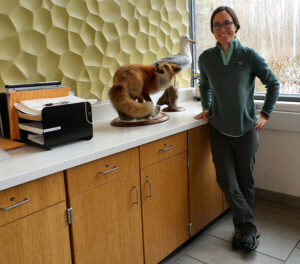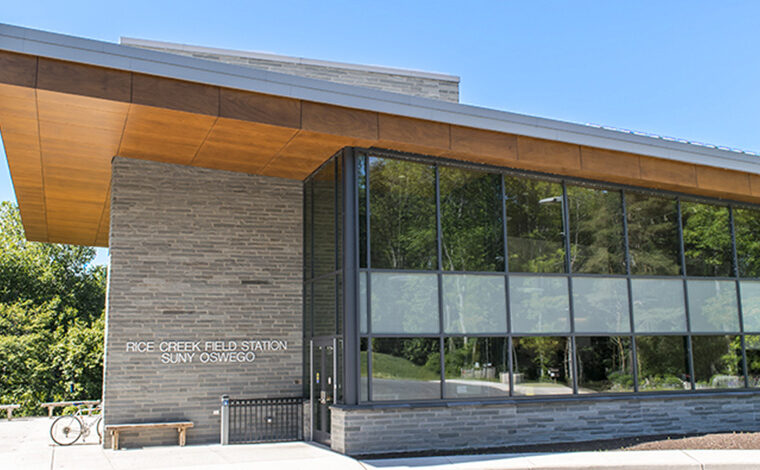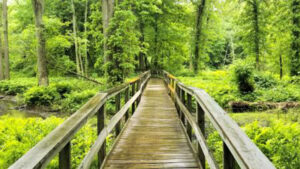
SUNY Oswego is a well-known Port City landmark, but the bulk of the campus is actually located in the town of Oswego.
Probably lesser known is a key part of university located less than two miles south of the main campus.
The Rice Creek Field Station is located on Thompson Road off of Route 104, about 1.5-miles south of the college campus’ main entrance. It opened in 1966.
The current building was inaugurated in 2013 as part of the science renovations at the college.
The original Rice Creek facilities were torn down in 2012.
“To see the hundreds of species that are supported on this property is hopeful,” Kristen Haynes, assistant director, said. “Obviously it is great when you can persevere a pristine piece of property that has never been plowed, never been cut. But that is so rare.”
OUTDOOR LAB
“We are an outdoor laboratory for the students,” she explained. “Rice Creek promotes the integration of environmental and ecological awareness into every aspect of undergraduate education.”
Along the front wall dozens of specimens are on display —from myriad birds to furry foxes and squirrels to snakes and a variety of bugs as well as fish and other critters.
The 7,640 square foot building provides facilities for the research and teaching of biological and earth science, Haynes explained.
Rice Creek Field Station is dedicated to the support of academic instruction, research and public service in all aspects of natural history, especially the natural sciences and environmental education.
Rive Creek’s year-round facilities provide opportunities for field-oriented biological and earth science teaching and research.
It was built to achieve LEED Gold certification (Leadership in Energy and Environmental Design) standards.
It was designed and built in a way that improves energy savings, water efficiency indoor environmental quality and co2 emissions reductions.
Its spacious interior features wide windows, lecture rooms, two labs, a collection room, offices and more.
The grounds also provide nature trails, as well as forests, ponds, and streams.
Just a few yards from the main building is an observatory with a 16-inch reflecting telescope. It’s managed by the physics department, Haynes noted.
At various times during the year, the general public is invited to join astronomers John Zielinski, Shashi Kanbur and Natalia Lewandowska for an evening at the station’s observatory.
Rice Creek: Trails, Birdwatching, Nature Education and More
The field station provides public programs in nature education for groups and individuals, school-aged to adult.
Four nature trails, open to the public, provide opportunities for hiking, snowshoeing and cross-country skiing.
The building is open
year round for the public to explore natural history and art displays and view wildlife.
Also offered are things like: after-school birdwatching, guided nature walks and nature art activities.
The field station’s namesake, Asa Rice, was the first settler to the Oswego area. Setting down in what today is part of the town of Oswego, Rice arrived from Connecticut in 1797.
While Visiting
Please:
• Stay on designated trails and do not remove or disturb wildlife or vegetation
• Leave no trace: carry out any trash you create or find
• Respect the property rights of neighbors and adjacent landowners and stay on Rice Creek property
Please no:
• Camping
• Boating, kayaking, canoeing
• Swimming
• Hunting, trapping or fishing
• Smoking
RICE CREEK
193 Thompson Road, Oswego, NY 13126
Phone: 315-312-6677 Fax: 315-312-6680
Email: rcfs@oswego.edu
Building Hours: Mon.–Fri. 9 a.m. – 4:30 p.m.. Sat. 9 a.m. – 3 p.m.
Trail Hours: Dawn to dusk













